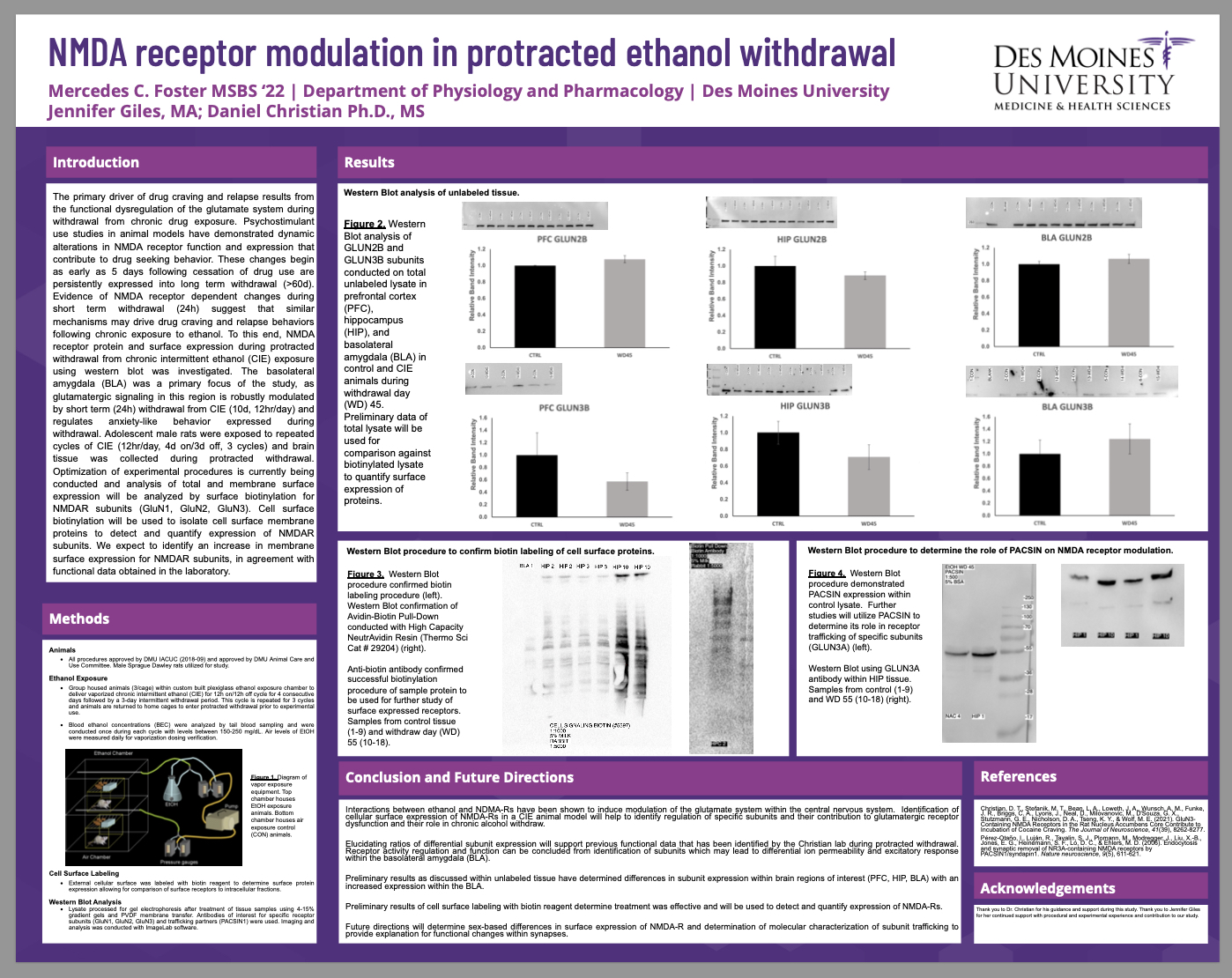
POSTER ABSTRACTS
Materials should NOT be shared with those that are not registered for the conference. Poster abstracts are not proofed for spelling and/or grammar errors.
The poster and/or other information contained on this website may NOT be downloaded and/or used without prior written permission from all authors on the project. If you would like to be connected with the author(s), please email [email protected].
NMDA receptor modulation in protracted ethanol withdrawal
Mercedes C. Foster, MSBS'22, Jennifer Giles, MA, and Daniel T. Christian, PhD
Department of Physiology and Pharmacology, Des Moines University, Des Moines, IA
Abstract
Functional dysregulation of the glutamate system during withdrawal from chronic drug exposure is a primary driver of drug craving and relapse. Animal models of psychostimulant use have demonstrated dynamic alterations in NMDA receptor function and expression that contribute to drug seeking behavior. These changes begin as early as 5 days following cessation of drug use are persistently expressed into long term withdrawal (>60d). Evidence of NMDA receptor dependent changes during short term withdrawal (24h) suggest that similar mechanisms may drive drug craving and relapse behaviors following chronic exposure to ethanol. To this end, we investigated NMDA receptor protein and surface expression during protracted withdrawal from chronic intermittent ethanol (CIE) exposure using western blot. We focused on the basolateral amygdala (BLA), as glutamatergic signaling in this region is robustly modulated by short term (24h) withdrawal from CIE (10d, 12hr/day) and regulates anxiety-like behavior expressed during withdrawal. Adolescent male rats were exposed to repeated cycles of CIE (12hr/day, 4d on/3d off, 3 cycles) and brain tissue was collected during protracted withdrawal. Optimization of experimental procedures is currently being conducted and analysis of total and membrane surface expression will be analyzed by surface biotinylation for NMDAR subunits (GluN1, GluN2B, GluN3). Cell surface biotinylation will be used to isolate cell surface membrane proteins to detect and quantify expression of NMDAR subunits. We expect to identify an increase in membrane surface expression for NMDAR subunits, in agreement with functional data obtained in the laboratory.
Access PDF version to expand view.

